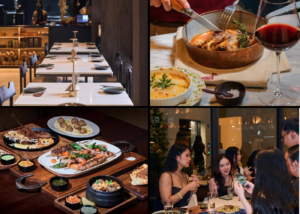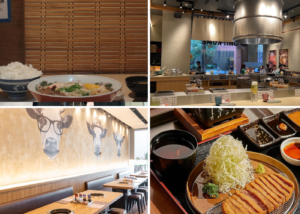In today’s digital age, the restaurant industry is embracing technology to create memorable dining experiences that go beyond exceptional cuisine. One such innovation that has taken the culinary world by storm is digital menu boards. These high-tech displays not only showcase what’s on offer but also play a significant role in enhancing the overall dining experience. In this blog post, we will delve into how digital menu boards are transforming the dining landscape by offering dynamic content, easy updates, and customization options.
Enhancing the Dining Experience:
Visual Appeal: One of the most immediate ways digital menu boards enhance the dining experience is through their visual appeal. Vibrant, high-resolution displays grab the attention of diners and make the menu items look even more enticing. Well-designed digital menus create an atmosphere of sophistication and modernity.
Engagement: Dynamic content, including animations, videos, and interactive features, engage diners on a whole new level. These boards can provide engaging descriptions, chef’s recommendations, and even background stories about the dishes, immersing customers in the culinary journey.
Real-time Updates: Digital menu boards allow for real-time updates, ensuring that customers are always presented with accurate information. This feature is particularly valuable for restaurants with frequently changing menus, seasonal specials, or limited-time offers.
Offering Dynamic Content:
Flexible Menu Layouts: With digital menu boards, restaurant owners can experiment with different layouts and designs. They can easily adjust the layout to highlight daily specials, promotions, or seasonal dishes. This flexibility ensures that the menu always looks fresh and relevant.
Daypart Scheduling: Dynamic content allows for daypart scheduling, meaning that the menu can automatically change based on the time of day. Breakfast items can be prominently displayed in the morning, transitioning to lunch and dinner offerings as the day progresses.
Multilingual Options: Digital menu boards make it easy to offer menus in multiple languages, accommodating diverse customer groups and enhancing accessibility.
Easy Updates and Customization Options:
Effortless Changes: Traditional printed menus can be expensive to update and often result in wasted paper. Digital menu boards eliminate these hassles by allowing instant changes from a central control panel. This means that corrections, price adjustments, or menu additions can be implemented with just a few clicks.
Seasonal Variations: Restaurants can easily adapt their menus to suit different seasons or holidays. For example, a café can switch from warm soups and hot beverages in winter to refreshing salads and iced drinks in summer.
Branding Consistency: Digital menu boards enable consistent branding across multiple locations. Updates can be synchronized across all branches, ensuring that the brand image remains uniform.
In conclusion, digital menu boards have evolved from being just a means of displaying food choices to becoming powerful tools for enhancing the dining experience. With dynamic content, easy updates, and customization options, they enable restaurants to create visually stunning, engaging, and highly adaptable menus. As diners increasingly seek immersive experiences and up-to-date information, adopting digital menu boards is not just a technological choice but a strategic move toward staying competitive in the modern restaurant landscape. Embrace the future of dining and make your restaurant stand out with digital menu boards.




